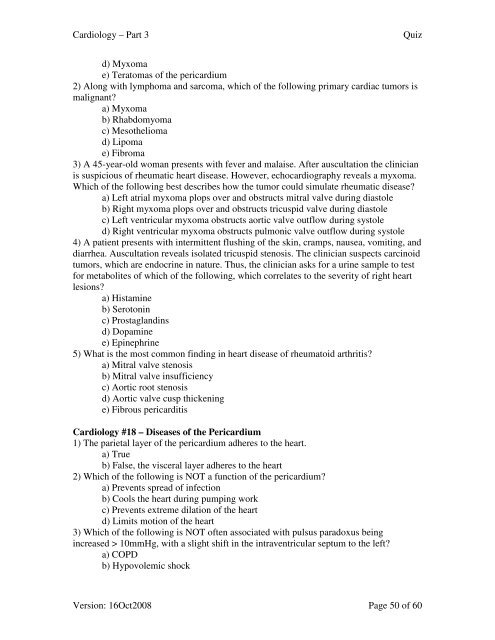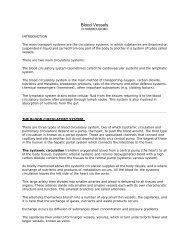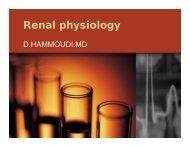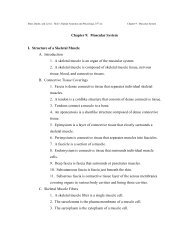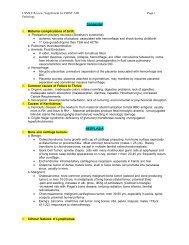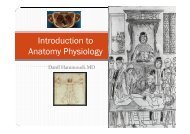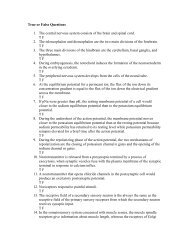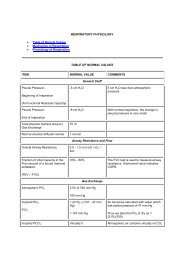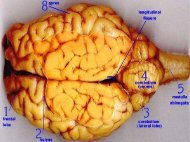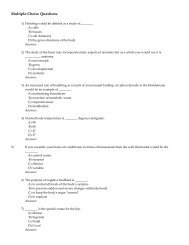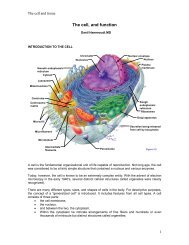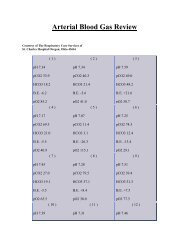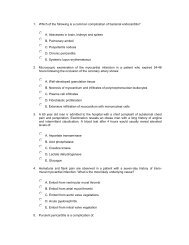Part 3 Quiz Version - Sinoe medical homepage.
Part 3 Quiz Version - Sinoe medical homepage.
Part 3 Quiz Version - Sinoe medical homepage.
You also want an ePaper? Increase the reach of your titles
YUMPU automatically turns print PDFs into web optimized ePapers that Google loves.
Cardiology – <strong>Part</strong> 3<br />
<strong>Quiz</strong><br />
d) Myxoma<br />
e) Teratomas of the pericardium<br />
2) Along with lymphoma and sarcoma, which of the following primary cardiac tumors is<br />
malignant<br />
a) Myxoma<br />
b) Rhabdomyoma<br />
c) Mesothelioma<br />
d) Lipoma<br />
e) Fibroma<br />
3) A 45-year-old woman presents with fever and malaise. After auscultation the clinician<br />
is suspicious of rheumatic heart disease. However, echocardiography reveals a myxoma.<br />
Which of the following best describes how the tumor could simulate rheumatic disease<br />
a) Left atrial myxoma plops over and obstructs mitral valve during diastole<br />
b) Right myxoma plops over and obstructs tricuspid valve during diastole<br />
c) Left ventricular myxoma obstructs aortic valve outflow during systole<br />
d) Right ventricular myxoma obstructs pulmonic valve outflow during systole<br />
4) A patient presents with intermittent flushing of the skin, cramps, nausea, vomiting, and<br />
diarrhea. Auscultation reveals isolated tricuspid stenosis. The clinician suspects carcinoid<br />
tumors, which are endocrine in nature. Thus, the clinician asks for a urine sample to test<br />
for metabolites of which of the following, which correlates to the severity of right heart<br />
lesions<br />
a) Histamine<br />
b) Serotonin<br />
c) Prostaglandins<br />
d) Dopamine<br />
e) Epinephrine<br />
5) What is the most common finding in heart disease of rheumatoid arthritis<br />
a) Mitral valve stenosis<br />
b) Mitral valve insufficiency<br />
c) Aortic root stenosis<br />
d) Aortic valve cusp thickening<br />
e) Fibrous pericarditis<br />
Cardiology #18 – Diseases of the Pericardium<br />
1) The parietal layer of the pericardium adheres to the heart.<br />
a) True<br />
b) False, the visceral layer adheres to the heart<br />
2) Which of the following is NOT a function of the pericardium<br />
a) Prevents spread of infection<br />
b) Cools the heart during pumping work<br />
c) Prevents extreme dilation of the heart<br />
d) Limits motion of the heart<br />
3) Which of the following is NOT often associated with pulsus paradoxus being<br />
increased > 10mmHg, with a slight shift in the intraventricular septum to the left<br />
a) COPD<br />
b) Hypovolemic shock<br />
<strong>Version</strong>: 16Oct2008 Page 50 of 60


